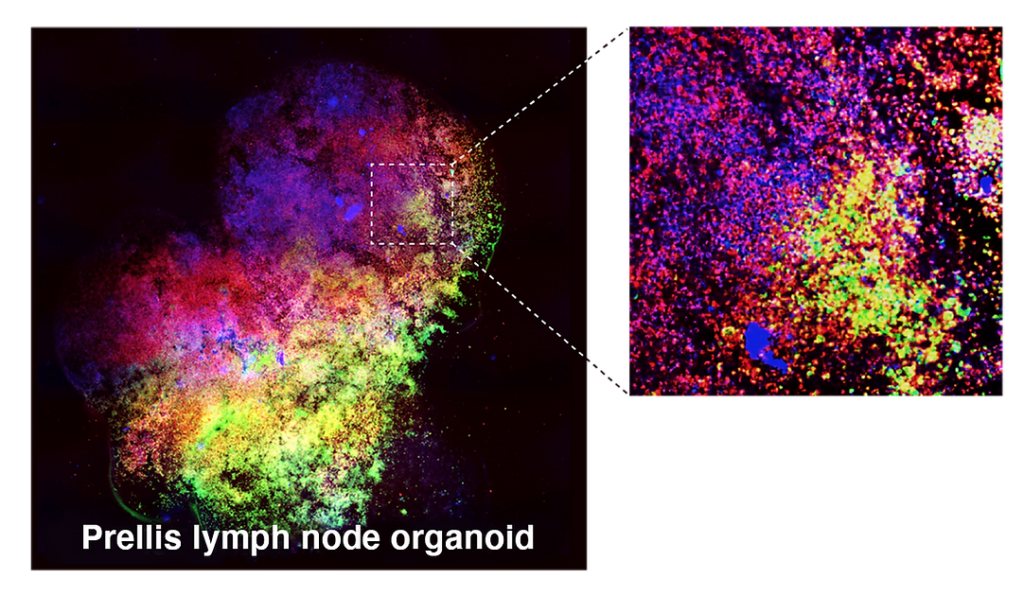Prellis Biologics secured a $14.5 million series B round lead by Celesta Capital with existing shareholders Khosla Ventures. Prellis has an Externalized Immune System (EXIS) platform which allows researchers to discover antibodies by mimicking the lymph node. The company claims that this will reduce the time to discover new antibodies from nine months to just 16 days. The platform allows the firm to reduce animal testing and discover antibodies to combat disease. Prellis is exciting because it can enhance and accelerate drug discovery and potentially reduce animal testing drastically.

The company says that the EXIS platform “functions precisely like a human lymph node“, in that it features cell-to-cell interactions within tissues and immune responses, as well as “B cell class switching, somatic hypermutation and development of antigen-specific human antibodies from multiple donors.” Additionally, the company claims to use “an antigen challenge carefully designed to ‘break tolerance’ a naturally embedded fail-safe that prevents auto-antibody development.” In turn, EXIS is able to be leveraged for developing antibodies across a number of therapeutic applications, from cancer to autoimmune disease, as well as “camelid nanobody discovery.”
“The EXIS platform offers unprecedented in vitro access to a functional human immune system. We’ve built a platform that enables promising science to be rapidly advanced into new patient therapies. We’re thrilled to continue expanding upon the exciting potential of this technology, thanks to the support of our investors and collaboration partners,” said CEO Dr. Melanie P. Matheu.
“We are extremely excited about the technology Prellis has developed and were delighted to support this investment. Today, pharmaceutical antibody discovery takes a long time, carries high costs due to reliance on animals, and the antibodies too rarely perform as hoped once they reach human trials. We are ready to support marketing for the EXIS platform now that initial deals have helped to prove out its great potential,” contributed Michael Marks, General Partner at Celesta Capital.

The company has hired Kevin Chapman from Merck & Co., Inc., as Chief Scientific Officer and Yelda Kaya as Chief Business Officer to help it expand. In addition to EXIS, the company also develops 3D tissue models. The firm has raised just under $30 million so far for its groundbreaking technology.
The stated goal of Prellis is to develop printable organs for implantation. This is a complex and difficult challenge to undertake, but the reason I’m very excited about this firm is that they have a very good shot at a very powerful intermediate business model, as well. Later on, the team could market tissues that might be advantageous.
For now, however, their own tooling in the form of EXIS could have significant effects. EXIS could aid the company’s own path toward achieving its goal, but it could also help the team find very many interesting compounds that it could license, bring to market with partners, or develop into drugs. If it manages to do this in a capital-light manner for itself, it would be able to give away less equity to investors. Instead of needing an endless stream of investor cash, it could license its relevant antibodies to generate funds, giving it the wherewithal to increase its capabilities.
If EXIS works as advertised the firm would be worth a lot to the pharmaceutical industry without getting any closer to printing tissue through its ability to accelerate drug development. I love that this is a startup with a lot of options and a lot of exits. There is a big goal and opportunity at the end of the tunnel, but even if the firm does not reach this big goal it will still deliver on a lot of potential value for shareholders and the market in general. This seems like a very smart play.
Subscribe to Our Email Newsletter
Stay up-to-date on all the latest news from the 3D printing industry and receive information and offers from third party vendors.
Print Services
Upload your 3D Models and get them printed quickly and efficiently.
You May Also Like
Consolidation in AM: How 2025 Is Shaping the Industry’s New Normal
The first half of 2025 has been marked by a clear shift in the additive manufacturing (AM) industry. Companies are no longer just focused on developing new tech by themselves....
Etsy Design Rule Change Reduces Selection of 3D Printed Goods
Online marketplace Etsy has implemented a rule change requiring all 3D printed goods on the site to be original designs. The update to the site’s Creativity Standards states, ¨Items produced using...
U.S. Congress Calls Out 3D Printing in Proposal for Commercial Reserve Manufacturing Network
Last week, the U.S. House of Representatives’ Appropriations Committee moved the FY 2026 defense bill forward to the House floor. Included in the legislation is a $131 million proposal for...
Transforming From Tourist to Native: Duro CEO Michael Corr Explains Why the Company Rebuilt its PLM Software on AI
In these early innings of the AI boom, many market analysts have expressed concern that AI spend has gotten too far ahead of the technology’s proven ability to deliver significant...
































